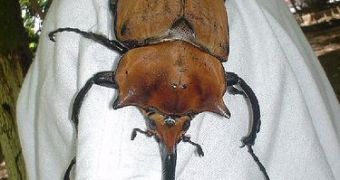People have discovered only a small percentage of all the living creatures on this planet and the last issue that scientists had to solve was the approximate number of insect species in the world.
A new research carried out by Umeå University researcher, Genoveva Rodríguez-Castañeda, found that there are six times more insects in tropical mountains than what previous global calculations concluded.
What was thought before this study was based on indices measured in tropical lowlands in Papua New Guinea, this is why researchers have estimated the total number of insects in the world only from five to ten million species.
Rodríguez-Castañeda looked for geographical variations in plant-insect interactions that depended on elevation, and whether these differences changed radically the statistics of insect diversity.
She found that in tropical mountain forests, there were more insects with a much more diversified menu that in tropical lowlands forests, and this phenomenon was not only happening in the Ecuadorean Andes, but also across the Barva volcano in Costa Rica.
Also, when the Neotropical zone was included in the study area, the numbers in herbivore diversity increased significantly, AlphaGalileo reported.
“This shows that what we know of insect diversity still lacks knowledge on tropical mountain diversity,” Rodríguez-Castañeda said.
“I have worked with one type of herbivore insects, moths [and] now we need to test if this pattern also occurs in other types of herbivore,” she added.
After this discovery, the researchers elaborated a model that explains the diversity of tropical herbivores, depending not only on food sources, but also on tropical mountain ecosystem factors like climate, protection from predators and evolutionary history.
The survey highlights not only the extraordinary diversity of specialized insects within the tropical mountain ecosystems, but also the huge lack of knowledge regarding the herbivore-plant interactions within.
“Our results urge ecologists to account for biogeographical variation when extrapolating in order to obtain global estimates,” Rodríguez-Castañeda said.
The results of the research are published in the journal Ecology Letters.

 14 DAY TRIAL //
14 DAY TRIAL //